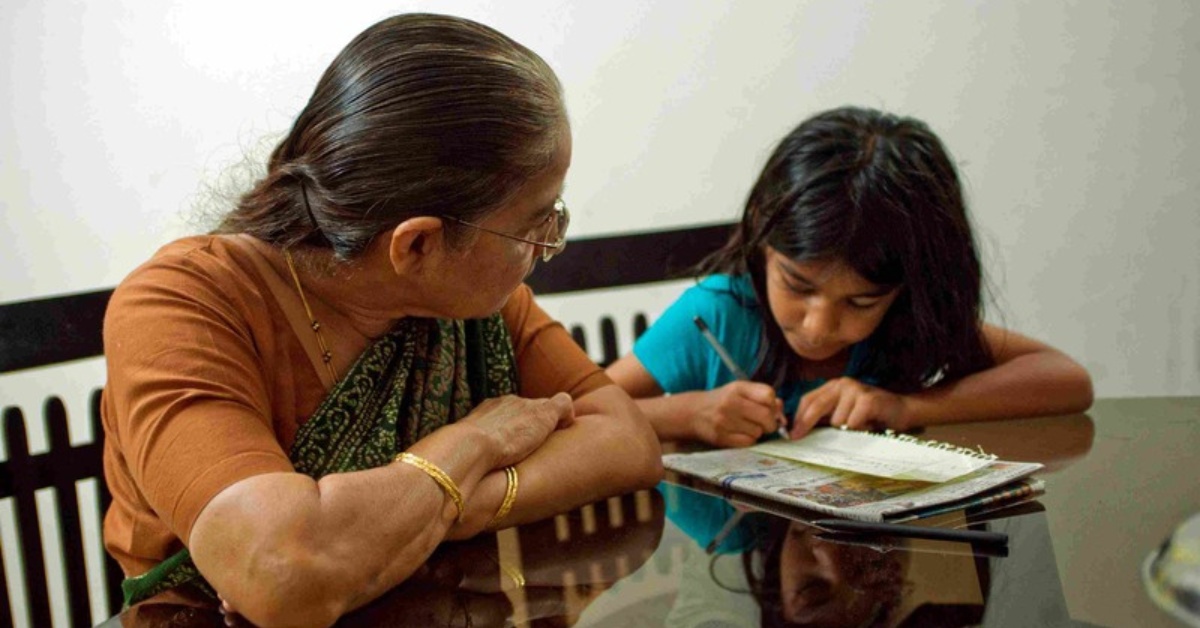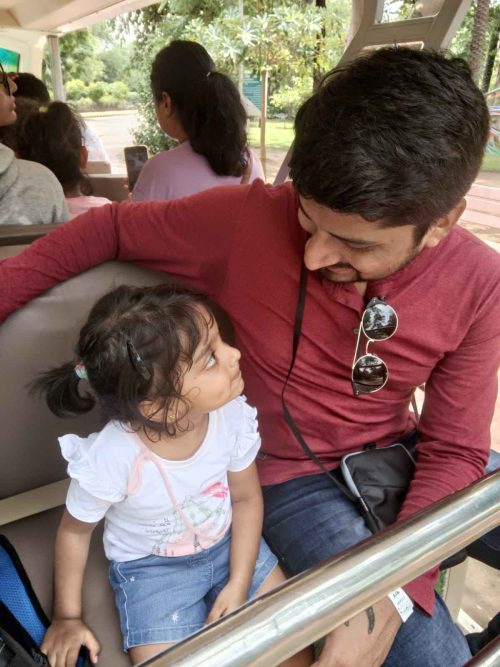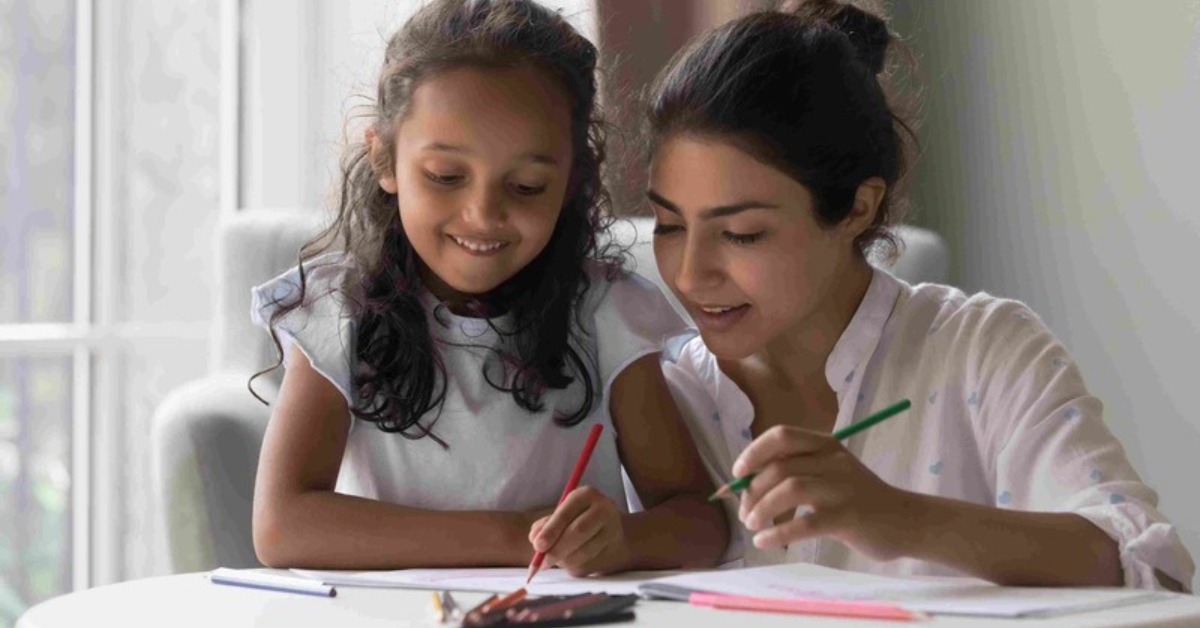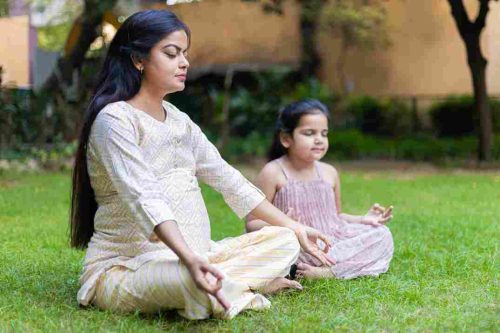How to Talk to Children About War: Addressing Anxiety Amidst the India-Pakistan Tensions
Maa, what is war?
Why did we sit under the table at school today?
Why was there a siren?
Are we safe?
These are some of the questions a five-year-old asked her mother on May 8, 2025, after a school day that felt anything but ordinary. With recent developments like Operation Sindoor making headlines across the country, even young children are picking up on the tension, and naturally, they have questions.
For parents, moments like these can be challenging. How do you explain complex topics like conflict and safety to a child in a way they can understand, without causing fear?
To help navigate these conversations, we reached out to Dr. Kaveri Subbiah, a Chennai-based Developmental Pediatrician who supports children with neurodevelopmental needs. She shares insights on how parents can respond with care, clarity, and age-appropriate reassurance.
‘Understand your child’s emotional maturity first…’
“It’s important to tell a child what the country is going through—but how we do that matters,” says Dr. Kaveri Subbiah. “Parents should first assess their child’s emotional maturity, and only then decide how much detail to share.”
This raises an important question for any parent: How well does my child truly understand what’s happening around them? Children don’t need all the answers, but they do need age-appropriate explanations that help them feel safe and supported.
Dr. Kaveri suggests approaching the conversation differently depending on the child’s age. She groups them into two broad categories: 4–10 years and 11–18 years.
 Dr. Kaveri emphasises the need to clarify and correct any misinformation while calmly reassuring them of their safety.
Dr. Kaveri emphasises the need to clarify and correct any misinformation while calmly reassuring them of their safety.
For older children and teenagers, exposure to news and social media plays a big role. “They are already accessing a lot of information online. The first step for parents is to understand where their children are getting their information from,” she advises. “Before explaining anything about border tensions or current events, it’s important to gauge what they already know—and whether their sources are reliable. Then, based on that, share limited and appropriate information.”
What if your teenager is already anxious? Dr. Kaveri emphasises the need to clarify and correct any misinformation while calmly reassuring them of their safety. “It’s not about hiding the truth but framing it in a way that’s accurate and reassuring.”
When it comes to younger children, metaphors from everyday life work best. “You can compare the situation to a minor disagreement between neighbours,” she says.
“Just like when two aunties in the neighbourhood might argue over something like a shared wall, and someone steps in to help resolve it, countries, too, sometimes have disagreements. The important part is to let children know that there are people—leaders, experts, and helpers—working to make things better. That’s the kind of reassurance they need.”
Dr. Kaveri also underscores the role of schools in guiding children through unsettling times. “Educational institutions should keep students informed about emergency drills and protocols, but with minimal exposure to the larger issue,” she notes.
“It’s best if teachers frame these drills like those for natural disasters—earthquakes or floods—so children learn how to stay safe without unnecessary fear. If needed, schools can consult psychologists or healthcare experts to help explain these situations in age-appropriate ways.”
Encourage open communication: Start by knowing your child’s source
When children begin asking questions about sensitive topics like border tensions, it can be tempting for parents to jump in with explanations. But Dr. Kaveri Subbiah urges a different approach: start by listening.
“Many parents might already be fielding tough questions about what’s happening,” she says. “My first advice would be to pause and ask your child a few simple questions before responding. Where did you hear about this? Who told you? Was it something you saw in a video? Or did a friend mention it? Their answers will help you understand not just what they know, but how they’ve come to know it.”
 By beginning with curiosity instead of correction, parents can create a space where children feel heard—and more importantly, reassured.
By beginning with curiosity instead of correction, parents can create a space where children feel heard—and more importantly, reassured.
These small questions can reveal a lot. Often, a child’s understanding is shaped by incomplete or inaccurate information shared by peers. “Most kids pick up half-baked stories from their friends,” explains Dr. Kaveri. “And many of these versions are a mix of imagination and hearsay.”
She emphasises that today’s children are far more informed than we often assume—and they can tell when an adult is being vague. “Parents need to be smart in how they respond. Children today are not just curious, they’re sharp. They already have some information, so meeting them at their level is important—with calm, clear, and honest communication.”
By beginning with curiosity instead of correction, parents can create a space where children feel heard—and more importantly, reassured.
Children mirror parental emotions: staying calm makes all the difference
One of the most powerful influences in a child’s emotional world is a parent’s own behaviour. “Children mirror their parents’ reactions,” says Dr Kaveri Subbiah. “This is something every parent should be deeply mindful of.”
If a parent appears anxious or overwhelmed, children often absorb that energy, sometimes without even realising it. “When a parent is tense, the child feels it too. That’s why it’s essential for parents to first ground themselves. Before speaking to a child about sensitive issues, take a moment to compose yourself,” she advises. “Half the work is done if the child senses that their parent is calm and confident. It helps them feel secure.”
 “Yoga, meditation, and art are wonderful tools to help children release stress,” says Dr. Kaveri Subbiah.
“Yoga, meditation, and art are wonderful tools to help children release stress,” says Dr. Kaveri Subbiah.
This principle also extends to what children see and hear at home. Dr. Kaveri strongly discourages exposing children to graphic news footage or discussions involving violence or death. “Children are impressionable. Talking about extreme scenarios or showing them unsettling images can deeply affect their emotional well-being.”
She adds another important reminder for parents: avoid repetition when discussing serious topics. “Once you’ve explained the situation, that’s enough. Over-explaining or repeating the same information can heighten a child’s anxiety, even if your intention is to reassure,” she explains. “Give them the space to ask more questions if they need to, but don’t overdo it.”
Ultimately, helping a child feel safe starts with the adult in the room feeling steady and clear. Parents don’t need to have all the answers, but their tone, presence, and calm matter more than they may realise.
Helping children cope: Simple techniques to ease anxiety
It’s natural for children to feel anxious or unsettled in times of uncertainty. Parents may notice signs of worry—even panic—in their children, especially when discussions about conflict or emergency situations arise. Fortunately, there are simple and effective coping mechanisms that can help children manage these emotions in a healthy way.
 Dr Kaveri also recommends that parents participate in calming activities alongside their children.
Dr Kaveri also recommends that parents participate in calming activities alongside their children.
“Yoga, meditation, and art are wonderful tools to help children release stress,” says Dr. Kaveri Subbiah. “For teenagers, writing can also be a powerful outlet. Encourage them to jot down their thoughts and feelings—it helps them process emotions they may not yet know how to articulate.” She also recommends that parents participate in calming activities alongside their children. “Doing breathing exercises or meditation together helps reduce anxiety and creates moments of meaningful connection.”
For younger children, especially those between the ages of 4 and 10, creative expression works best. “Let them draw, paint, or craft freely. These activities allow them to work through complex emotions in a natural and comforting way,” she explains.
Above all, reassurance remains key. “No matter the child’s age, they need to hear that they’re safe,” Dr. Kaveri emphasises. “Let them gently and repeatedly know that everything is under control and that they are protected. This kind of reaffirmation helps children feel calm, secure, and more capable of handling change.”
Responses to difficult questions kids may ask
These are some tough but common questions children ask, especially during times of conflict. Here are thoughtful, calm responses that balance honesty with reassurance.
1. “Is there going to be a war?”
“That’s a really important question. Right now, there are strong people in both countries who are working hard to avoid that. Just like in arguments, it might look scary, but there are grown-ups trying to solve it peacefully.”
2. “Will we be safe?”
“Yes, we are safe right now. It’s okay to feel a little scared, but remember, the government and armed forces have plans to protect everyone. And I’m always here to keep you safe too.”
3. “Why are people fighting?”
“Sometimes, people—or even countries—have big disagreements about what’s fair. It’s complicated, but the goal is always to find a peaceful way to solve it.”
Edited by Leila Badyari
News